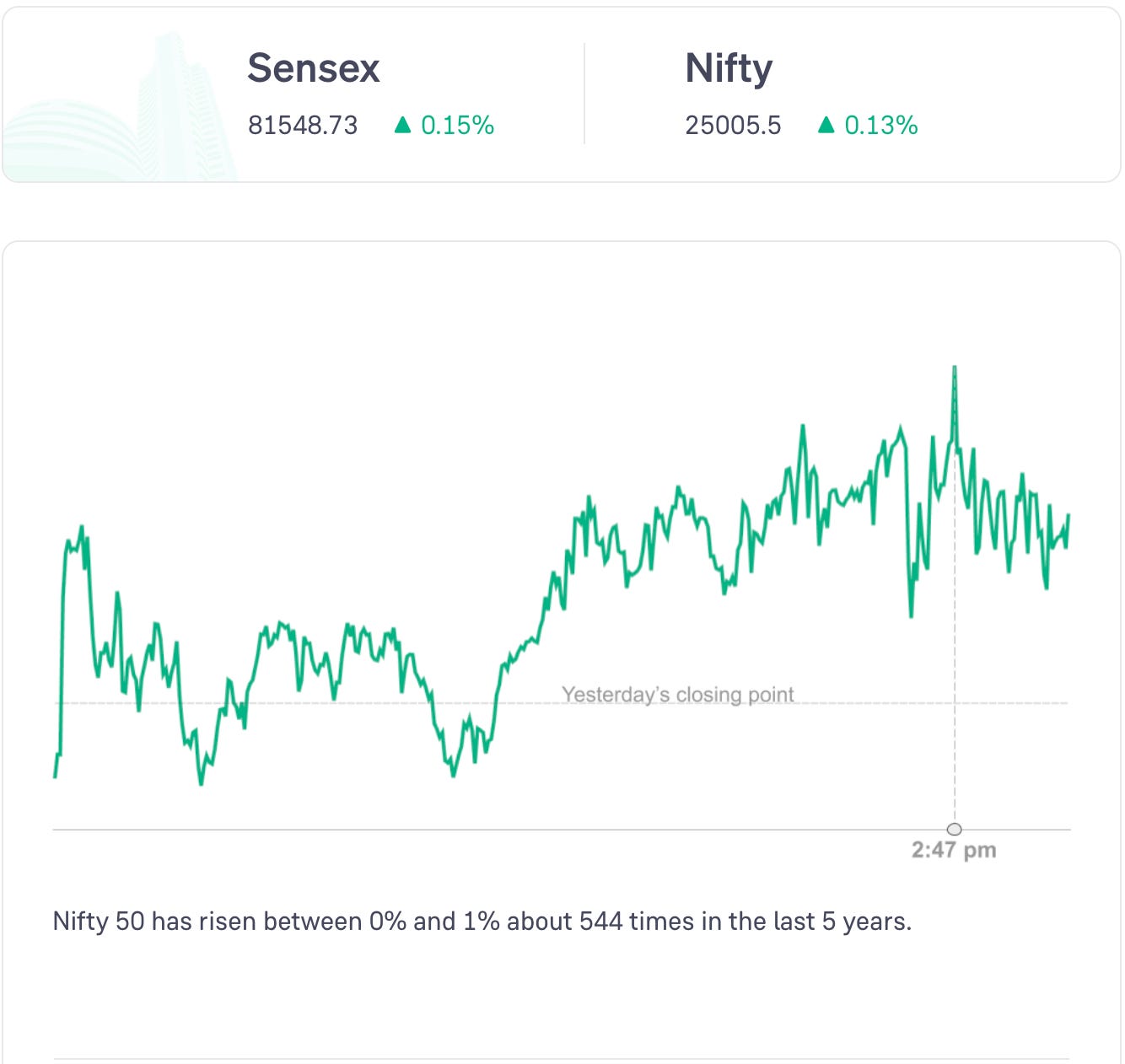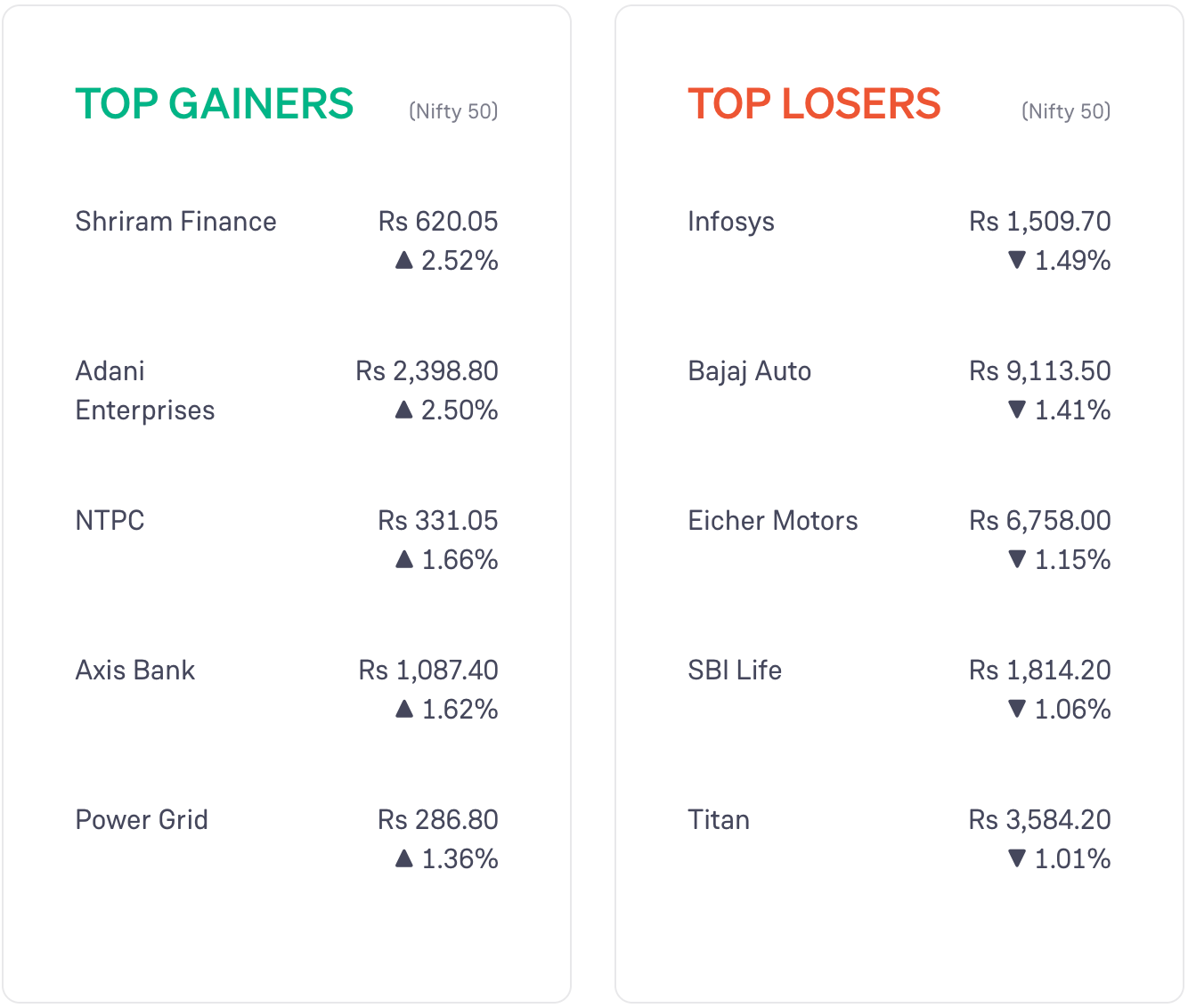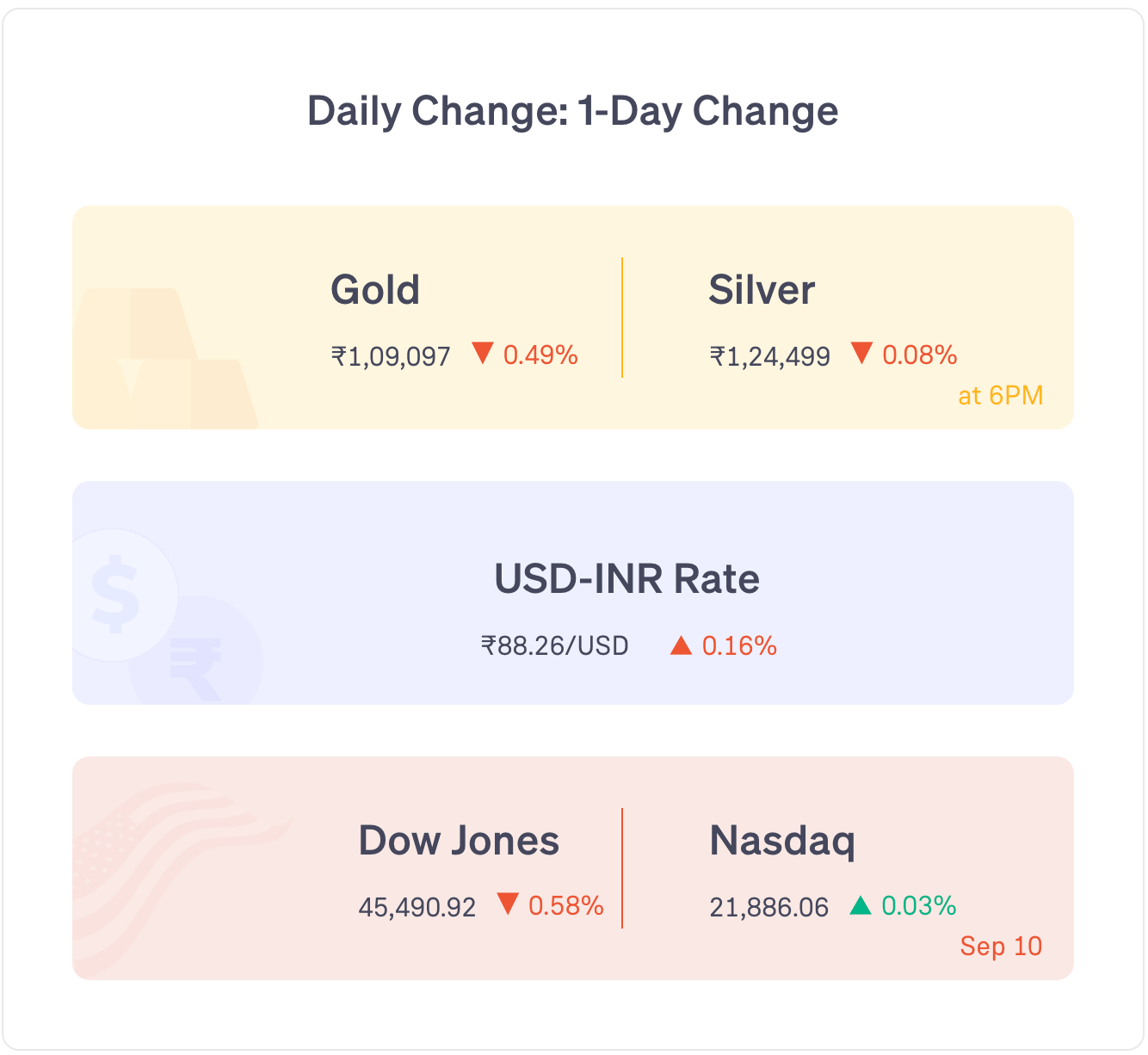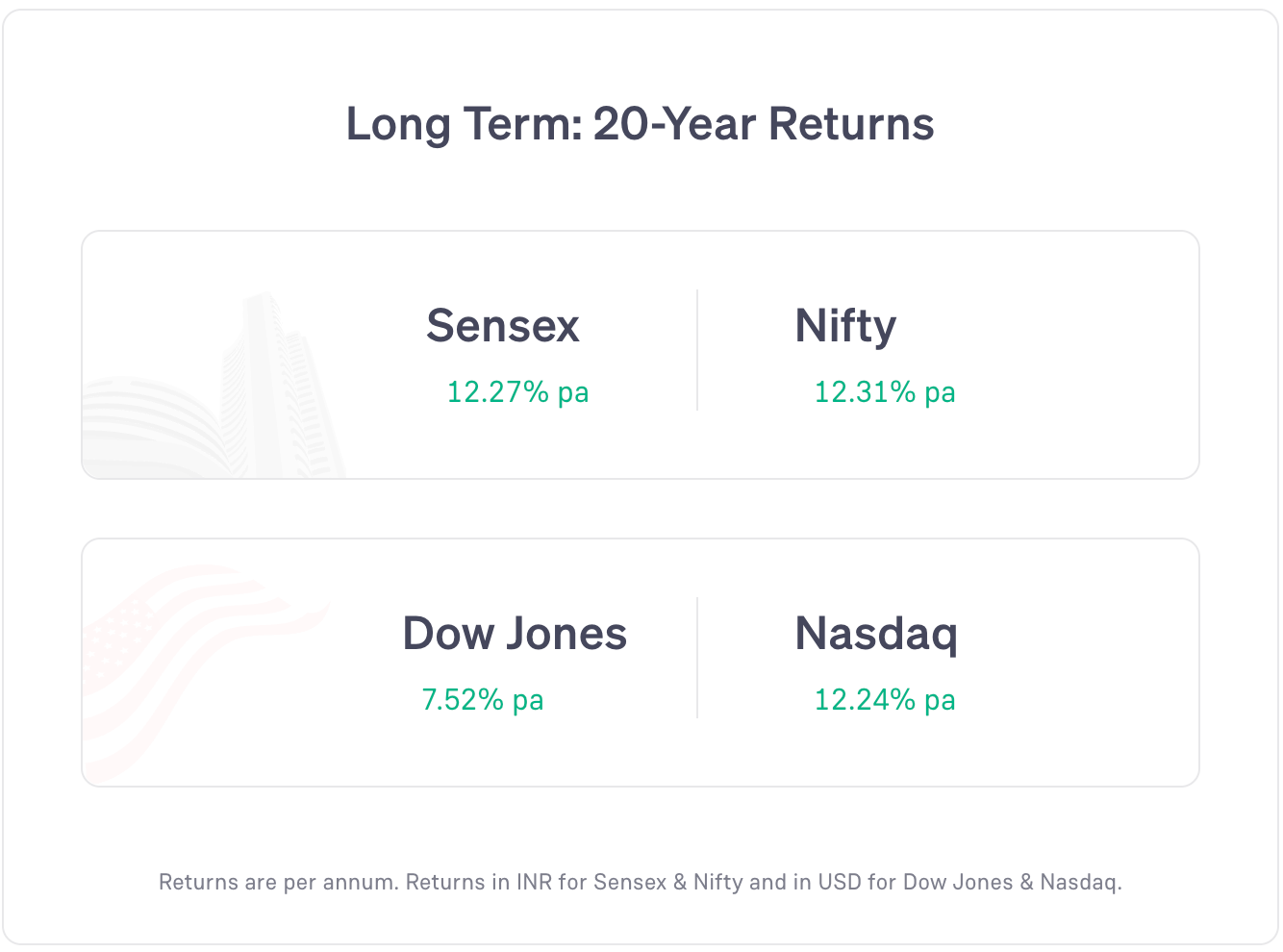US inflation rises, SEBI simplifies rules for FPIs, Mazagon Dock plans submarines, & more - Daily Digest
Thursday, 11 September 2025
Markets opened below yesterday’s closing point.
Nifty 50 stayed within a range and closed in the green.
Oil and gas stocks and media stocks rose the most today. IT stocks and auto stocks fell the most.
Global markets: US markets showed a mixed trend. Most Asian markets rose. European markets rose (as of 6 pm IST).
News
The USA’s inflation rate rose to 2.9% year-on-year in August (vs 2.7% in July). Core inflation (excluding volatile items) remained steady at 3.1%.
The Indian government and the Asian Development Bank signed a $126 million loan to develop sustainable tourism in Uttarakhand’s Tehri Lake region.
SEBI has simplified compliance for Foreign Portfolio Investors (FPIs) investing only in government securities, to attract foreign investment. The changes will be effective from 8 Feb 2026.
Urban Company IPO has been subscribed 9 times. Retail subscription: 17.68 times. IPO is open till tomorrow (12 Sept).
Stocks Updates
Marico: will acquire the remaining 46.02% stake in HW Wellness (True Elements) for up to Rs 138 crore, making it a wholly owned subsidiary.
Adani Power: received a letter of award from MP Power Management to set up an additional 800 MW thermal power plant at Anuppur, Madhya Pradesh.
Dr Reddy’s: acquired the ‘STUGERON’ brand across 18 markets globally from Johnson & Johnson for $50.5 million to expand in the anti-vertigo market.
Mankind Pharma: company’s Rs 2.9 crore GST penalty for FY 18 to FY 22 has been fully withdrawn by the appellate authority.
Adani Ports: a company subsidiary, Mandhata Build Estate, fully acquired Dependencia Logistics for Rs 37.77 crore to expand its logistics business.
Mazagon Dock: started negotiations with the Indian Navy for Submarine Project - P75 (I), which aims to develop 6 state-of-the-art, stealth, long-endurance submarines.
Word of the Day
Specialised Investment Fund (SIF)
It is an investment fund for experienced investors who can handle more risk
It needs a minimum investment of Rs 10 lakh.
An SIF sits between a mutual fund and a portfolio management service or PMS (something that you are learning about in the 6 day course below).
It offers professional management like in PMS with more flexibility than regular mutual funds.
The fund managers can invest in different types of assets and use advanced strategies for potentially higher returns, but they also carry higher risk.
6 Day Course
Theme: PMS
Day 4: Thursday
At this point, many readers might want to know which is better: PMS or mutual funds.
You would expect PMS returns to be higher. But that is not always the case.
Yes, there are many PMS that have given higher returns than many mutual funds.
Many times, mutual funds have managed to give way better returns.
Timing, and decisions are critical in getting higher returns from PMS.
This is why, investors who are not very aware of the markets opt not to invest in PMS.
Investors who have some understanding of the markets but don’t have the time to track their portfolio closely tend to use PMS often.
PMS also allows concentrated portfolios — which means, when things go right, returns are much higher. When things are bad, returns dip much further.
PMS are also quicker in their execution — which means they can take advantage of situations faster.
And lastly, PMS is a lot more about fund manager skill than in mutual funds. A good fund manager can deliver very high returns because of the freedoms a PMS fund has.
Featured Question
Q. “What is the difference between Nifty TMI and TRI?”
Let’s first understand what Nifty 50 is.
It is an index of the 50 biggest companies in India.
Since these companies are the biggest in India, their impact is also outsized.
So the index, Nifty 50, is calculated using the stock price of each of these 50 stocks.
Weightage is given to companies based on their size.
So the biggest company will affect the Nifty 50 more than the one smaller than that, and so on.
The Nifty 50 is used to measure the mood of the stock markets.
Now, companies pay dividends.
These dividends are not counted in the Nifty 50. So, if a company pays dividends, it will not positively affect the Nifty 50.
So, to account for this dividend, they use Nifty 50 TRI, where TRI stands for Total Returns Index.
Many people believe that Nifty 50 is only a partial measure of the stock markets — since it measures only the 50 biggest companies’ health.
Nifty TMI aims to solve that.
Nifty TMI tracks 750 companies — which includes a much greater part of the stock markets.
TMI stands for Total Markets Index.
- Nifty 50: tracks 50 biggest companies
- Nifty 50 TRI: tracks 50 biggest companies + its dividends
- Nifty TMI: tracks 750 biggest companies
Nifty 50 is made up of only large-cap stocks.
Nifty TMI is made up of large, mid, and small-cap stocks.
Did you like this edition?
Leave a feedback here!





